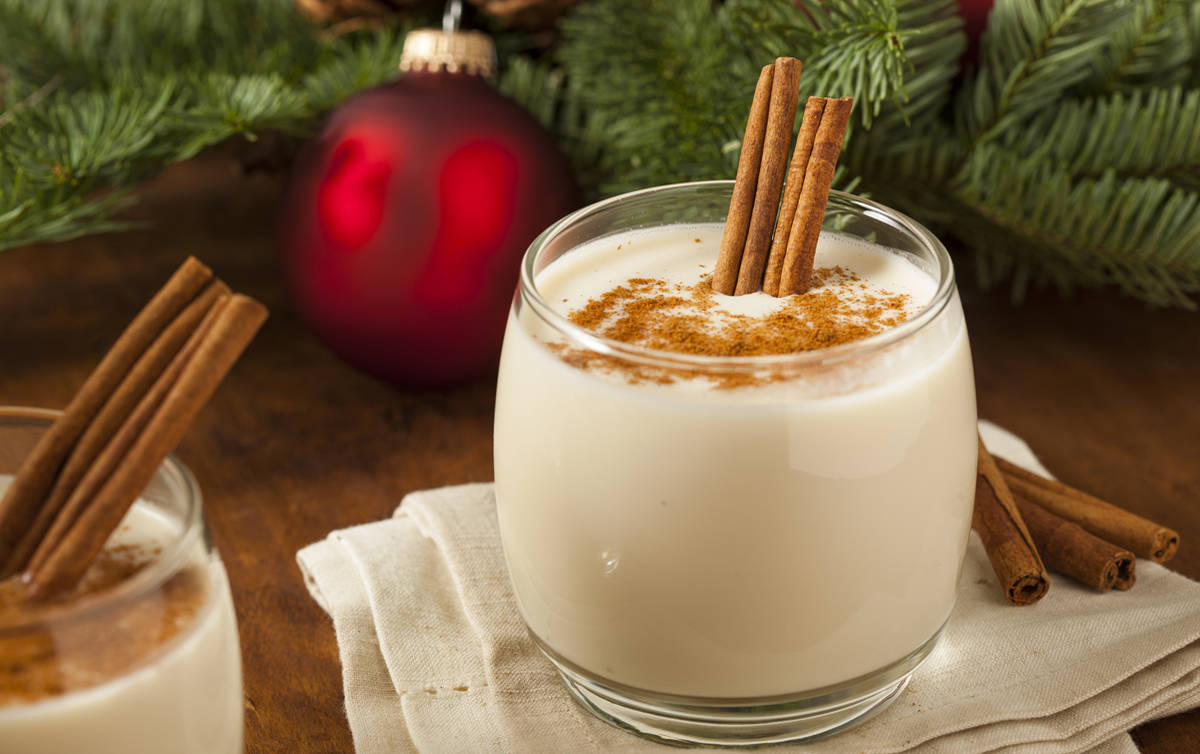 By Carolyn Washburn
By Carolyn Washburn
Since the early 1800s, eggnog has been considered a social Christmas drink that adds to the festivities of the season. To many, it brings back fond memories of Christmases by the firelight, real Christmas trees, and the grandest of holiday meals.
Although your traditional eggnog recipe may be a family favorite, if the recipe includes raw eggs, it is recommended that you alter it. Eating raw eggs can not only be dangerous but deadly since they may contain the bacterium salmonella, which can cause food-borne illness. Anyone can fall victim to food-borne illnesses, but some people are at a higher risk, including infants, young children, pregnant women, older adults, and individuals with weakened immune systems who suffer from chronic illnesses such as HIV, liver disease, diabetes, or cancer.
Be aware that refrigerated eggs with clean shells that don’t have cracks can still be contaminated with salmonella bacteria. To safely make holiday eggnog, use one of the following substitutions.
—In place of raw eggs, use an equivalent amount of pasteurized (frozen or refrigerated) egg product that has never been opened. Because of the risk of bacterial contamination after opening, any leftover egg product should be used only in cooked products.
—Use cooked eggs in your eggnog recipe. Combine raw eggs with half of the milk and sugar in a 4-quart double boiler. Cook and stir over medium heat for approximately 10–15 minutes until the mixture coats a metal spoon and the temperature reaches 160 F. Continue preparing your recipe as directed.
—If a recipe calls for folding raw, beaten egg whites into the eggnog, use pasteurized eggs. It has not been proven that raw egg whites are free of salmonella bacteria.
—Use commercially prepared eggnog, which contains pasteurized eggs and does not need to be cooked.
—Try the recipe below.
Holiday Eggnog Recipe
5 cups skim milk
3/4 cup sugar
1 cup pasteurized, refrigerated egg product, 1 cup pasteurized frozen egg product (thawed in the refrigerator), or 4 eggs
1 12-ounce can evaporated skim milk
2 teaspoons vanilla extract
1/4 teaspoon rum extract (optional)
1 pint low-fat frozen vanilla yogurt, softened
Ground nutmeg to taste
In a 4-quart double boiler, combine milk, sugar, and egg product or eggs.
If using eggs, cook and stir over medium heat for approximately 10–15 minutes until the mixture coats a metal spoon and the temperature reaches 160 F. Remove from heat. (Omit this step if using pasteurized egg product.)
Stir in the evaporated skim milk, vanilla extract, and rum extract (if desired). Cover and chill for 4–24 hours in the refrigerator.
To serve, place softened frozen yogurt in a punch bowl. Gradually whisk in chilled eggnog mixture until smooth. Sprinkle with nutmeg to taste.
Adding alcohol will inhibit bacterial growth, but it cannot be relied upon to kill bacteria. Once alcohol is diluted, it no longer effectively kills bacteria. You will still need to use pasteurized eggs. Keep in mind that simmering eggnog over heat will remove the alcohol.
Holidays are a fun but hectic time. By amending your eggnog recipes for safety, you’ll have one less thing to worry about.
Carolyn Washburn is a Utah State University Extension professor.
Articles related to “Five tips for safe holiday eggnog”
Just in time for Christmas, Millennials are ditching religion



